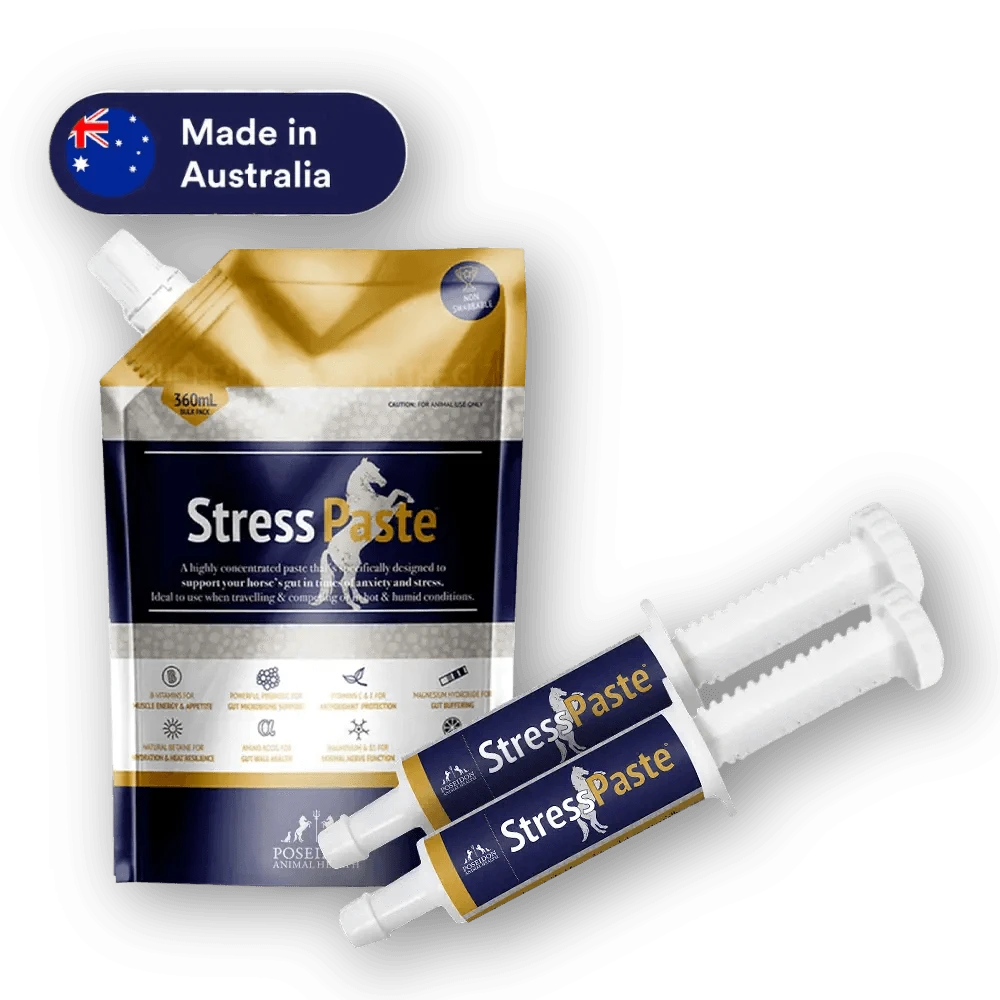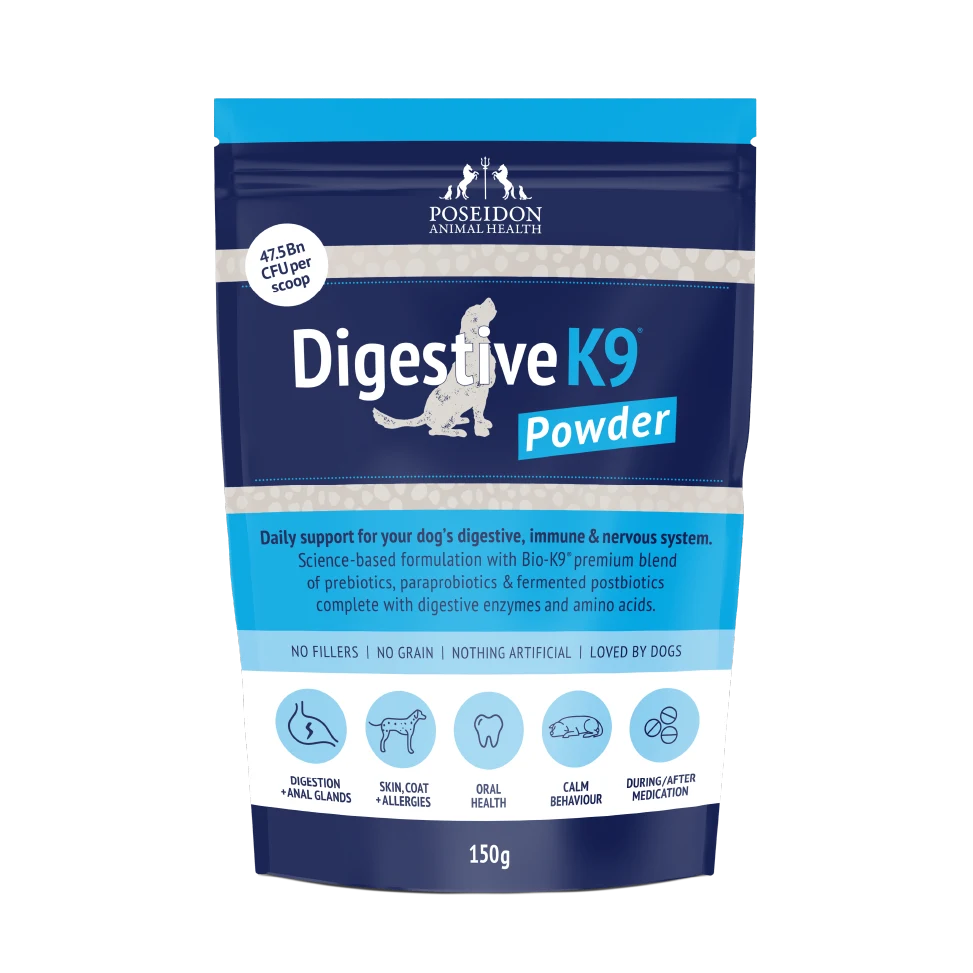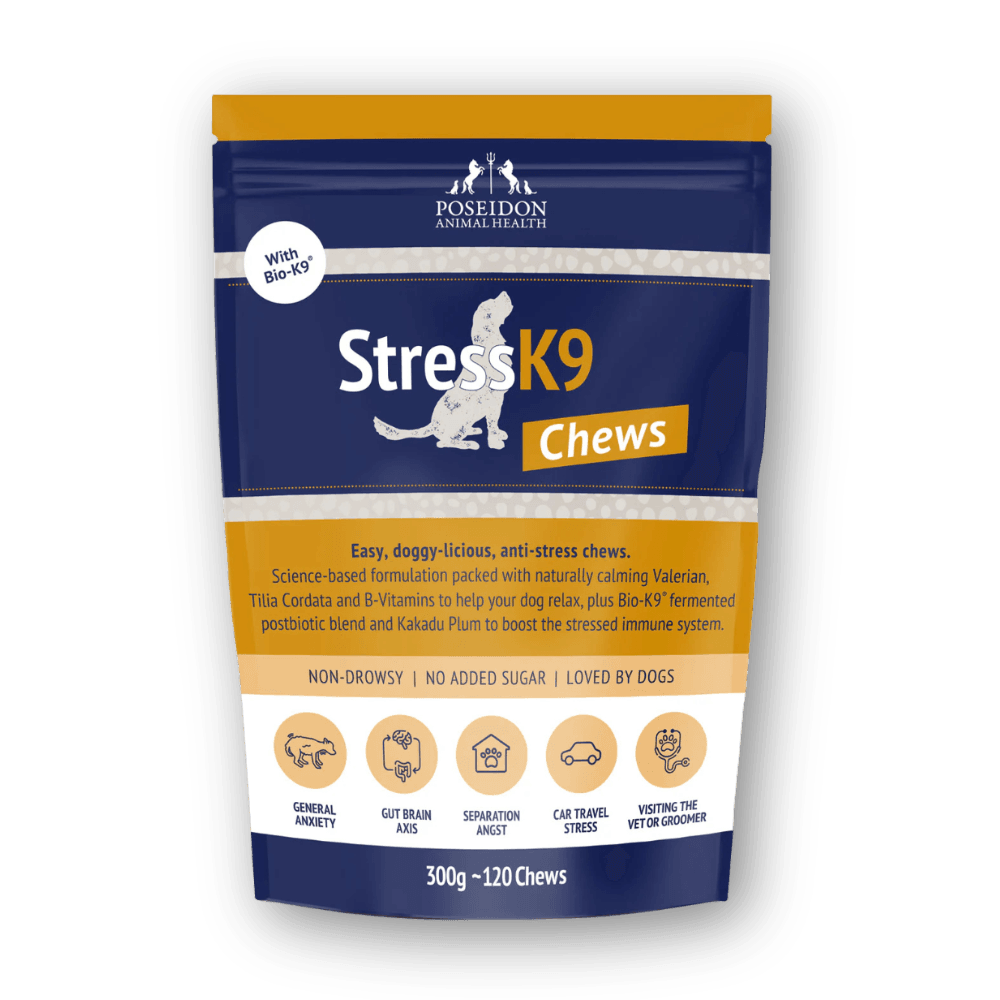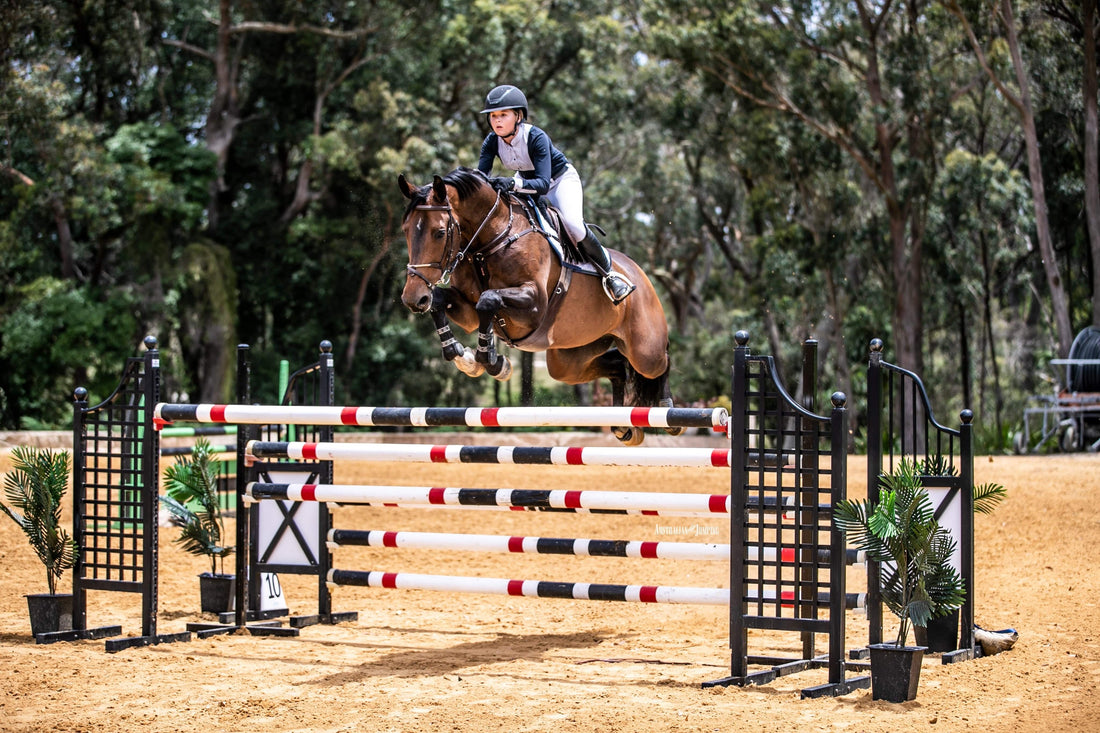
Sam Potter - Bachelor of Equine Studies (Hons), Master of Philosophy in Veterinary Science (Equine Nutrition)
Does gut health affect your performance horse?
The short answer is, yes. We ask a lot of performance horses. As a result of regular, high-intensity exercise, travel, how they’re housed, and what they’re often fed, performance horses can be at much greater risk of poor gut health and its associated problems. These include: gastric ulcers, colic, diarrhoea, poor performance, and behavioural problems. (And though they’re not strictly performance problems, poor gut health can also cause weak hooves and a dull coat).
Realistically, if you compete with or race your horse, you probably can’t avoid all the factors which negatively impact their gut health – such as travel or high-intensity exercise. But in this article, we’ll focus on what you can control – such as diet, turnout time and providing gut support. By working on what you can control, we can help minimise the impact of performance on your horse’s gut health, so they can look, perform, and behave at their very best.
How does gut health affect performance?
‘Gut health’ is a pretty broad term, and it refers to all parts of your horse’s gut including the stomach, small intestine, and hindgut (caecum & colon). So, when we say a horse has ‘poor gut health’ it could be that the horse has ulcers (glandular or squamous) in their stomach, or that the microbial population (ie. microbiome) in their hindgut is out of whack. Hence, there are a whole lot of ways in which poor gut health can affect your horse and their behaviour. Having said that, pain and behavioural changes (also often caused by pain) are probably the two biggest factors which affect performance.
Ulcers
Gastric ulcers are lesions in the stomach wall, and they hurt. Research tells us that horses who have gastric ulcers experience associated pain, and this may reduce their performance1. This seems easy enough to understand – when you’re in pain, you tend not to perform at your best. Studies in both thoroughbred and standardbred racehorses confirm that there is a significant association between the presence of squamous gastric ulcers and decreased performance2,3.
Another study4 looked at thoroughbred racehorses with squamous gastric ulcers; half were treated with omeprazole and the other half were left untreated. The researchers reported that the untreated horses fatigued more quickly, showed a lower increase in maximal specific oxygen uptake, and shorter stride length. That is, the increased abdominal pain associated with their gastric ulcers seemed to reduce ventilation and stride length, which would also likely reduce performance.
An unhealthy hindgut
Your horse’s hindgut is essentially a huge fermentation vat (approx. volume 150L) which your horse uses to convert fibrous feeds (like pasture, hay, and chaff) into energy, and nutrients such as vitamin B1 and biotin. The hindgut is the engine of your horse BUT it only works if the right hindgut microbes are present (we’ll call them the ‘good’ microbes). Undesirable changes in the hindgut microbiome (ie. a shift from mainly ‘good’ microbes to more ‘bad’ ones) can reduce energy, vitamin B1 and biotin production, and can also cause hormonal changes via the gut-brain axis. Outwardly you might see this in your horse as lethargy or fatigue, anxiety or hyperactivity, or uncharacteristic flighty or moody behaviour.
But it doesn’t end there. Undesirable changes in the hindgut microbiome and the hindgut environment overall (eg. if the hindgut becomes acidic) can also cause inflammation and irritation of the gut lining, and this causes a chain reaction. Firstly, an inflamed hindgut can cause colic – a manifestation of pain – but in severe cases, the gut lining can also become more permeable (ie. ‘leaky gut’), which allows entry of toxins and inflammatory agents into the bloodstream. This causes a systemic inflammatory response which compromises your horse’s overall health (eg. immunity, mental stress, and allergies) and performance (eg. fatigue, hydration, and recovery). Of course, every horse owner wants to avoid this, and what you feed your horse can have a big impact here.
Studies have shown that horses fed high-starch diets experience changes in the hindgut microbiome5. One study took this further and looked at the effect of these microbial changes on behaviour5. It showed that feeding a high-starch, low-fibre diet was associated with increased numbers of starch-degrading bacteria (ie. ‘bad’ microbes) in the hindgut, along with increased vigilance and less time spent feeding. These are behaviours associated with anxiety and depression, and they may also be associated with intestinal pain.
What are the risk factors for poor gut health in performance horses?
Confinement including stabling and limited pasture turnout
Stabling or confining your horse to a yard – even with appropriate feeding management – can cause stress, which can definitely increase the risk of gut problems, such as colic and ulcers. However, even before outward signs (eg. colic or diarrhoea) show up, things can be going wrong behind the scenes (ie. subclinically). Initially, undesirable changes in the hindgut microbiome are likely to compromise gut health by increasing gut wall permeability and inflammation, and decreasing the gut’s ability to convert fibrous feeds into energy (so your horse seems to have become a ‘poor doer’).
Free access to grazing is good for intestinal health. It mimics a natural diet and enables normal feeding behaviour, gentle exercise, and social interaction. Research has shown that pasture turnout is generally associated with a reduced risk of colic compared to stable confinement. One study found that horses who were fully stabled or who’d had their grazing time reduced, were three times more likely to experience colic than those at pasture full time6.
Grazing horses also appear to be at less risk of gastric ulcers. One study showed that in thoroughbred racehorses in training, horses who were given access to some turnout were less likely to have ulceration; but within seven days of being removed from pasture and placed in stables, squamous gastric ulceration had occurred and that was despite free access to grass hay and no training7.
Stabled horses are more likely to spend periods of the day without feed. Increased time between forage meals (>6 hours) compared with more frequent forage feeding (<6 hours) increases the likelihood of squamous ulcers7.
Travel
Travel can negatively impact gut health in several ways including: increasing the risk of squamous gastric ulcers, changing the hindgut microbiome, and increasing the risk of colic. Travel-related changes such as decreased feed (especially forage) and water intake are some major causes, but travel-related stress alone can cause changes in the hindgut microbiome.
In the research, an increased risk of squamous gastric ulcers has been demonstrated in horses who were transported for long durations (8+ hours), but the effects of shorter trips (less than 3-4 hours) on gastric ulcers risk has not yet been investigated.
A recent study looking at the effect of 12 hours of travel on horses, showed increased squamous gastric ulcer lesions in horses who were fasted before transport9. Horses who were fed 2.5kg of lucerne hay within 1-6 hours of departure had less squamous gastric ulceration.
Another study compared the diversity of hindgut microbes in horses who travelled with horses who didn’t travel10. The research scenario was similar to what many performance horses experience for competition – a 90 minute trip, followed by a 48 hour stay away, followed by a 90 minute trip home. The upshot was that horses who travelled had decreased microbial diversity. The researchers also identified changes in several microbial populations which may contribute to stress-related health issues.
Diet
Large amounts of grain-based (high-starch) feed are often fed to performance horses to meet their high energy demands. However, horses have a limited ability to digest starch and too much grain-based feed can negatively impact gut health – both in the stomach and hindgut.
Studies have shown that increased amounts of grain-based feed, increases the risk of gastric ulcers8,11. Grain (and specifically, the starch in grain) can actually start to ferment in the stomach, which produces acidic by-products. This further lowers the pH of the stomach contents and can damage the sensitive mucosa. So, limiting the amount of grain (and hence starch) your horse eats is important.
Large grain-based meals can also negatively affect hindgut health. For horses to utilise starch as an energy source, it must first be broken down into glucose. This process occurs in the small intestine and it requires an enzyme called amylase. Horses produce limited amounts of amylase, which in turn limits the amount of starch they can digest. Any starch that is left undigested passes through the small intestine into the hindgut (more specifically the caecum) and here it undergoes rapid fermentation by bacteria. These bacteria produce lactic acid as a by-product which can lower hindgut pH. This acidic hindgut can in turn affect hindgut function (fibre fermentation, and hence energy and vitamin production) and impact immunity, behaviour and performance.
Exercise
A certain level of exercise is thought to benefit gut health. However, in human athletes it is well documented that intense, particularly endurance-related exercise, causes changes in gut microbial populations. Endurance athletes are a greater risk of respiratory infections and gut troubles, including increased intestinal permeability, disruption of mucous thickness, and bacteria moving into the bloodstream12.
Studies looking at the impact of intense exercise on gut health in horses are limited and have mainly focused on stomach health. One study looking at thoroughbreds in simulated race training, found that all horses in the unfit group (15 horses) developed squamous gastric ulcers within 2 weeks (the majority within 7 days). These horses were fed 6kg of hard feed per day, removed from pasture, stabled, and exercised 6 days per week13.
The effect of exercise training on the development of squamous and glandular ulcers has been investigated in thoroughbred horses14. Exercising 5-7 days per week was associated with a 10 times greater risk of glandular ulcers. This study also showed that horses with glandular ulcers were more likely to perform below expectation.
Research into the effect of exercise on hindgut microbiota in horses is relatively limited. However, a recent study was conducted where exercise was performed by healthy individuals, accustomed to that type of exercise. The researchers observed significant differences in the populations of key microbes when compared to the populations observed before the exercise15. So, this means that even when horses who are used to exercise perform that exercise, their hindgut microbiome is affected.
So, now we’ve covered what the impacts can be on your horse’s gut and gut health as a result of their ‘performance lifestyle’. Now let’s look at what you can do to help minimise the effects of performance and support your horse’s gut.
How to support good gut health in performance horses
Provide constant access to forage
A continuous flow of forage and (consequently) saliva, buffers gastric acid in your horse’s stomach for a large proportion of the day. The forage also provides a physical barrier to stop gastric acid splashing up onto the delicate upper (squamous) part of the stomach.
Plenty of good quality forage also provides your performance horse with a valuable source of energy, so you can at least partly reduce your reliance on high-starch feeds to meet their energy needs. Fibre (a major component of forage) is also a food source for the ‘good’ microbes in the hindgut, which supports their numbers and diversity. These ‘good’ microbes are largely responsible for fermenting fibre to produce the energy and vitamins that your horse needs. They also help maintain optimal hindgut pH, aid the function of the immune and endocrine systems, and keep the numbers of ‘bad’ microbes in check. By supporting these ‘good’ microbes with their preferred food source (forage), you are supporting good gut health in your horse.
For performance horses, providing unlimited access to long-stem forage (pasture and/or hay) is recommended. At a minimum, horses should consume 1.5% of their body weight in forage each day and ideally closer to 2% of their body weight (which is 7.5-10kg for a 500kg horse).
Limit grain-based feed
To minimise the negative impact that large, grain-based meals can have on your horse’s stomach and hindgut health, reduce the amount of grain (and hence starch) that you feed.
Limit the amount of starch to no more than 1g starch per 1kg body weight per meal (maximum 2 meals per day). See the table below for examples on how much grain or grain-based feed you can safely feed per meal (as the only grain source) for a 500kg horse.
Any grain or grain-based feed (apart from oats) that you do feed your horse, should always be heat treated/processed (ie. extruded, steam rolled/flaked, boiled or micronized) to ensure easy digestion of starch in the small intestine.
|
Feed |
Approximate starch (%) |
Safe amount per meal (kg) |
|
Barley |
60 |
0.8 |
|
Oats |
40 |
1.2 |
|
Corn |
70 |
0.7 |
|
Premixed feed (high starch) |
50 |
1.0 |
|
Premixed feed (moderate starch) |
25 |
2.0 |
Lucerne hay before exercise and transport
Lucerne hay has been shown to help reduce the incidence and severity of gastric ulcers16. Feeding lucerne hay before work reduces acidity in the stomach and provides a physical barrier to stop gastric acid splashing and causing damage to the upper (squamous) region of the stomach.
Provide daily gut support + additional gut support during high-stress periods
Digestive EQ is a daily gut health supplement. It contains ingredients which are known to promote overall gut health and integrity. It contains marine source calcium, which buffers gastric acid and hence may help protect against acid injury of the squamous mucosa. Digestive EQ also contains glutamine and threonine which are amino acids the gut uses to repair and regenerate its lining and protective mucous layer. Additionally, Digestive EQ contains enzymes, which may aid the digestion of starch from grain-based feeds in the small intestine, reducing the likelihood of undigested starch entering the hindgut.
Digestive EQ also contains a powerful prebiotic. Prebiotics are included with the intention of feeding the ‘good’ microbes in the hindgut.
Stress Paste may offer extra gut support for periods of acute stress. It can be given strategically with the aim of minimising the impacts of performance on your horse’s gut health. Stress Paste may be administered prior to travel and intense exercise, and throughout multi-day competitions.
Stress Paste contains a number of ingredients including: magnesium hydroxide, a potent buffer of gastric acid; pectin, a sticky substance that can line the upper sections of the stomach to help protect against acid splashes; and amino acids (threonine, glutamine, proline and serine) which are known to be used by the gut to repair and regenerate healthy gut tissue, and produce its protective mucous layer.
Stress Paste also contains a yeast derived prebiotic. This is intended to act as a food source to support the ‘good’ microbes in the hindgut and make them more resilient to change (which can occur as a result of travel, intense exercise and stress).
Additional ingredients in Stress Paste include betaine, B-vitamins, vitamin C, and vitamin E, with the aim of keeping your horse eating well, hydrated, and protecting their working muscles.
Other management changes
Modifying other management practices to further support gut health in your performance horse are recommended. These include:
- Exercising 4 days per week or less
- Providing 24/7 pasture turnout or regular daily turnout – ideally with companions.
What are some examples of gut-friendly performance horse diets?
Example 1 ‘Trinket’
17.1hh 625kg, 5 days per week, show Jumper (moderately heavy work), 8 hours access to paddock ankle height mixed grass pasture.
Goals:
Supply enough energy to perform.
Challenges:
Prone to squamous gastric ulcers in the past when on a high grain diet
Considerations:
Forage: Trinket has access to pasture for some of the day but needs to be provided with grass and lucerne hay for the rest of the day. She is given 1-2kg lucerne hay before work each day to ensure she isn’t exercising on an empty stomach.
High calorie fibre: To top up energy and diversify Trinket’s fibre intake, let’s add beet pulp to her diet.
High calorie feeds: To further top up Trinket’s energy intake, we can add steam-flaked barley (but not too much!). Linseed oil is added to provide more energy without having to use more grain.
Quality protein: Trinket will benefit from a good quality protein source. Let’s add extruded full fat soy.
Vitamins & minerals: Trinket needs her vitamin and mineral intake balanced, so we’ll add Digestive VM at the full rate.
Diet:
- 4kg Grass Hay
- 3kg Lucerne Hay
- 600g Lucerne Chaff
- 300g Beet Pulp
- 6kg Steam-flaked Barley
- 300g Extruded Full Fat Soybean
- 120ml Linseed Oil
- 80g Digestive VM
- 130g Digestive EQ
- 30g Salt
- Free choice salt
Example 2 ‘Monty’
16.2hh, 500kg, TB, in race preparation (very heavy work), stabled.
Goals:
Supply enough energy to perform.
Challenges:
Prone to squamous ulcers and poor appetite.
Considerations:
Forage: Monty needs all his forage supplied, so let’s add plenty of grass and lucerne hay. This amount of hay will ensure Monty doesn’t go for long periods without eating and will encourage lots of chewing to buffer stomach acid. Monty also gets a large proportion of lucerne hay as this is what he finds most palatable, and it provides additional buffering in the stomach. He is given 2kg lucerne hay before work each day to ensure he isn’t exercising on an empty stomach.
High calorie fibre: To top up energy and diversify Monty’s fibre intake, let’s add beet pulp to his diet.
High calorie feeds: To further top up Monty’s energy intake, we can add steam-flaked barley (but not too much!) and lupins. Linseed oil is added to provide more energy without adding too much grain.
Quality protein: Monty will benefit from a good quality protein source. Let’s add extruded full fat soy (lucerne hay and lupins will also help).
Vitamins & minerals: Monty needs his vitamin and mineral intake balanced, so we’ll add Digestive VM at the full rate.
Diet:
- 5kg Grass Hay
- 4kg Lucerne Hay
- 1200g 50/50 Chaff
- 300g Beet Pulp
- 6kg Steam-flaked/extruded Barley
- 1kg Lupins
- 250g Extruded Full Fat Soybean
- 300ml Linseed Oil
- 80g Digestive VM
- 130g Digestive EQ
- 80g Salt
- Free choice salt
Summary
Performance horses are at increased risk of poor gut health. Factors such as confinement, travel and intense exercise can all take their toll on gut health, increase the risk of gastric ulcers, alter normal hindgut microbial populations, and increase the risk of colic. The effect of performance on gut health is bidirectional – that is, performance can affect gut health, and in turn, poor gut health can affect performance.
Here are the most important feeding tips to remember for your performance horse:
- Provide constant access to plenty of good quality forage
- Feed lucerne hay before exercise and travel
- Limit how much grain-based feed you give your horse
- If possible, allow pasture turnout with companions
- Provide daily gut support PLUS extra support( Stress paste ) during high-stress periods
You want your performance horse to look, behave and perform at their best. By controlling factors such as diet and certain aspects of management, you can help to minimise the impacts on gut health caused by other factors that are inherently associated with being a performance horse.
References
- Andrews FM. Poor performance: Can heartburn slow a horse? Equine Veterinary Education. 2008. Volume 20. Pages 125–126.
- Vatistas NJ, Snyder JR, Carlson G, et al. Cross-sectional study of gastric ulcers of the squamous mucosa in Thoroughbred racehorses. Equine Veterinary Journal. 1999. Volume 31, Supplement 29, Pages 34–39.
- Jonsson H, Egenvall A. Prevalence of gastric ulceration in Swedish Standardbreds in race training. Equine Veerinary Journal. 2006. Volume 38, Pages 209–213.
- Nieto JE, Snyder JR, Vatistas NJ, Jones JH. Effect of gastric ulceration on physiologic responses to exercise in horses. American Journal Veterinary Research. 2009. Volume 70, Pages 787–795.
- Destrez, Alexandra & Grimm, Pauline & Cézilly, Frank & Julliand, Véronique. Changes of the hindgut microbiota due to high-starch diet can be associated with behavioral stress response in horses. Physiology & Behaviour. 2015. Volume 149.
- Hudson, Jason & Cohen, Noah & Gibbs, Pete & Thompson, James. Feeding practices associated with colic in horses. Journal of the American Veterinary Medical Association. 2001. Volume 219, Pages 1419-1425.
- Murray MJ, Eichorn ES. Effects of intermittent feed deprivation, intermittent feed deprivation with ranitidine administration, and stall confinement with ad libitum access to hay on gastric ulceration in horses. American Journal Veterinary Research. 1996 Volume 57, Issue 11, Pages 1599-1603.
- Luthersson, N., Hou Nielson, K., Harris, P. and Parkin, T.. Risk factors associated with equine gastric ulceration syndrome in 201 horses in Denmark. Equine Veterinary Journal. 2009. Volume 4, Issue 7, Pages 625-630.
- Padalino, Barbara & Davis, Georgina & Raidal, Sharanne. Effects of transportation on gastric pH and gastric ulceration in mares. Journal of Veterinary Internal Medicine. 2020. Volume 34.
- Perry, Erin & Cross, Tzu-Wen & Francis, Jesse & Holscher, Hannah & Clark, Stephanie & Swanson, Kelly. Effect of Road Transport on the Equine Cecal Microbiota. Journal of Equine Veterinary Science. 2018. Volume 68.
- Nadeau, J. A., Andrews, F. M., Patton, C. S., Argenzio, R. A., Mathew, A. G. and Saxton, A. M. Effects of hydrochloric, acetic, butyric, and propionic acids on pathogenesis of ulcers in the nonglandular portion of the stomach of horses. American Journal of Veterinary Research. 2003. Volume 64, Pages 404–412.
- Mach N, Fuster-Botella D. Endurance exercise and gut microbiota: A review. Journal Sport Health Scencei. 2017. Volume 6, Issue 2, Pages 179-197.
- Vatistas NJ, Sifferman RL, Holste J. Induction and maintenance of gastric ulceration in horses in simulated race training. Equine Veterinary Journal. 1999. Volume 29, Pages 40–44.
- Sykes, Benjamin & Bowen, Mark & Habershon‐Butcher, Jocelyn & Green, Martin & Hallowell, Gayle. Management factors and clinical implications of glandular and squamous gastric disease in horses. Journal of Veterinary Internal Medicine. 2018. Volume 33, Pages 233-240.
- Górniak W, Cholewińska P, Szeligowska N, Wołoszyńska M, Soroko M, Czyż K. Effect of Intense Exercise on the Level of Bacteroidetes and Firmicutes Phyla in the Digestive System of Thoroughbred Racehorses. Animals. 2021. Volume 11. Pages 290.
- Lybbert, T., Gibbs, P., Cohen, N., Scott, B. and Siglen, D.. Feeding alfalfa hay to exercising horses reduces the severity to gastric squamous mucosal ulceration. Proceedings of the 54th Annual Meeting of the American Association of Equine Practitioners meeting. Orlando, Florida, December 1–5. 2007. Volume 53, Pages 525–526.







